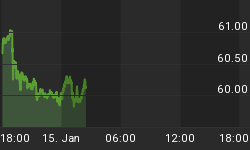Ever since John Maynard Keynes popularized the Paradox of Thrift, economists, central bankers and politicians have labored under the misapprehension that high levels of savings are bad for the economy and inhibit growth. The Paradox of Thrift simply states: Increased savings means there are less buyers for goods produced, so the nation as a whole will tend to produce less.
- If an individual saves they increase their wealth;
- But if an entire nation saves, this causes a shortfall in consumption; and
- The shortfall in consumption will cause national income to fall.
Keynes was correct in his observation that high level of savings caused a shortfall in national income, but we need to remember that he was writing in the 1930s -- in the middle of the Great Depression. His General Theory was published in 1936. What Keynes observed was an anomaly caused by the financial crisis. Falling asset prices threatened the solvency of both individuals and corporations, forcing them to increase their level of savings and -- most importantly -- use their savings to repay debt.
Not only will national income fall when savings are used to repay debt, but it falls rapidly. The shortfall between saving and new investment (or spending and income) may be small but, like a puncture in a car tire, the result can be disastrous. At each point in the supply chain the leakage is repeated: A receives an income of $1.00 and use 5 cents to repay debt, only spending $0.95. B will receive $0.95 from A, where previously they received $1.00, and will use 5% to repay debt, only spending $0.9025. C will only receive $0.9025 from B but still uses 5% to repay debt, only spending $0.857... The pattern continues until incomes shrink to the point that parties can no longer afford to repay debt and are forced to consume all of their income. The impact on national income -- as evident from the 1930s -- can be devastating.
Keynes pointed out that government can break the cycle and make up the shortfall, by spending more than it collects by way of taxes -- so that the aggregate level of spending is unchanged. But fiscal stimulus is fraught with dangers, not least of which is the massive public debt hangover faced by the US, Japan and many European economies. I will cover these dangers in more depth in a later post.
Under normal conditions, however, the paradox of thrift does not apply:
- If an individual saves they will increase their wealth;
- If the entire nation saves, there is no effect on national income provided savings are channeled through the financial system into new capital investment.
- All that then happens is less consumer goods but more capital goods are produced -- spending as a whole does not fall.
- Production, as a result, will also not fall.
National income is, in fact, likely to rise. New capital investment will boost productivity and accelerate growth.
Consider the simple example of a farmer who saves and buys a tractor. His overall spending is unaffected. He merely consumes less and spends the proceeds on something else -- in this case a tractor. The income of the store that supplies him with consumer goods will decrease, but the income of the dealer that sells him the tractor will rise; the net effect on national income is so far zero. But the farmer now produces more food with his new tractor; so his income -- and the national income -- increases.
This misconception that the paradox of thrift applies in normal markets has done immense harm to the economy and eroded the savings of the middle-class and retirees. For three generations, central bankers attacked savers by artificially reducing interest rates -- in the belief that lower savings would boost demand and stimulate the economy. Low interest rates simply forced savers to assume more risk, in order to earn a return on their investment, and encouraged speculation. The traditional work hard and save ethic that is the backbone of the capitalist system has been supplanted by the consume, borrow and speculate profligacy that got us into such a mess. High levels of public and private debt, inflation, volatile investment returns and rising income inequality are all consequences of the low-interest policy pursued by the Fed. Today's giant casino is a far cry from the cautious, prudent investment outlook of our grandparents' generation.
I will conclude by reminding you that:
- Savings channeled into new capital investment actually boost growth.
- Savings are only harmful when used to repay debt or other non-productive purposes.
- Low interest rates encourage speculation and the formation of bubbles;
- Bubbles cause financial crises; and
- Financial crises force consumers to repay debt.
....the never-ending circle of life.
















